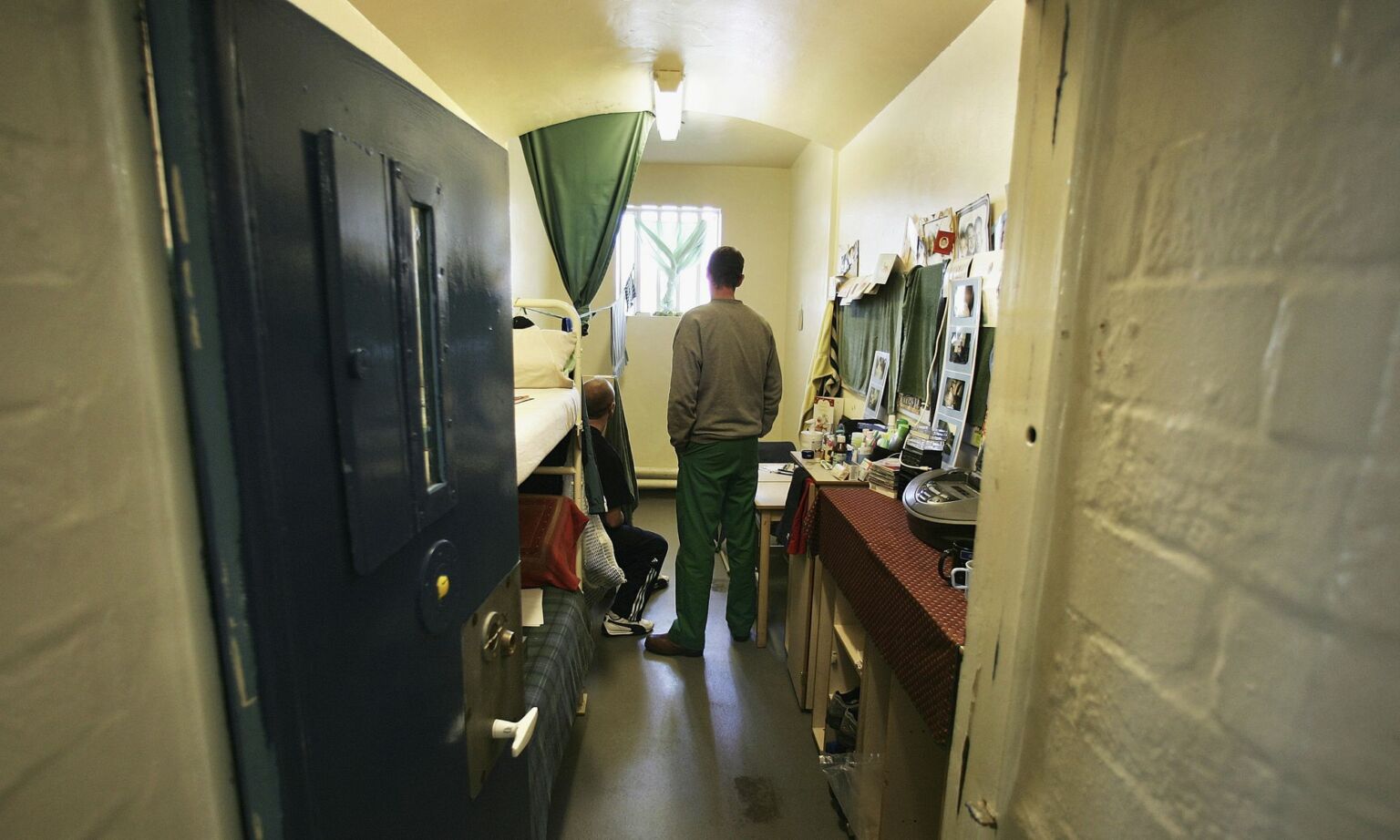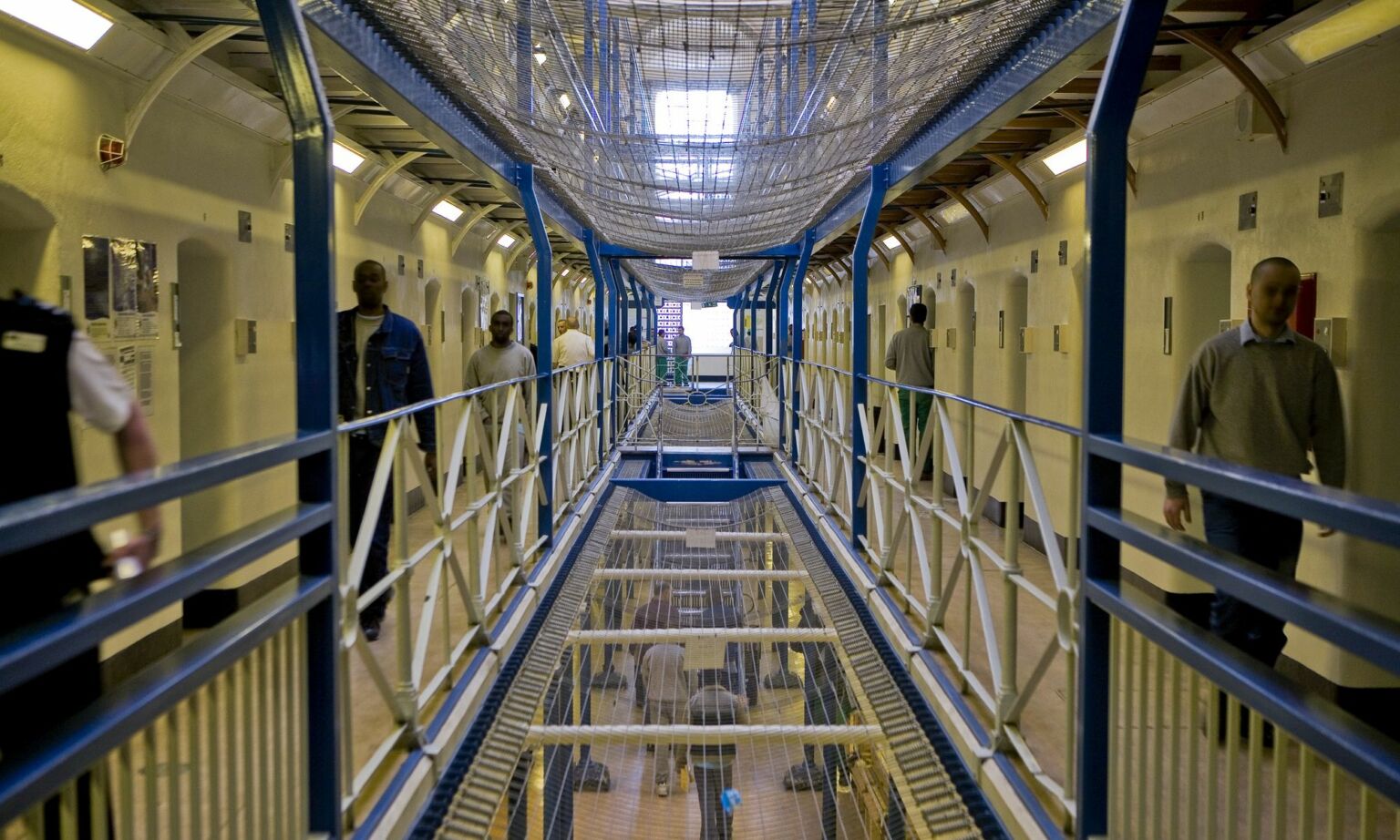At the beginning of this month, on the eve of the Labour government’s early release of 1,700 prisoners, the prison population in England and Wales stood at 88,251. The offenders within – men, women and kids over 17 – are detained in a penal archipelago of 121 jails, ranging from soulless modern slums to Napoleonic prisoner-of-war camps, that extends from the Cumbrian coast to the port of Dover.
These statistics are often used by the industry of prisoner-advocacy pressure groups – sometimes known as prison-reform charities – that proliferate noisily on the edges of public discourse and policy on why and how we lock up prisoners. The prison service is an entirely demand-led enterprise; prisons lock up those judged to have offended too much or too seriously to retain their freedom. There are those who lament the scale of our commitment to penal servitude. They might be on to something, but I want to look at these numbers from a different perspective for now. Eighty-eight-thousand offenders would fill Wembley Stadium with a bit of room to spare. Assuming you had enough staff and a sensible reason, you could decant the entire prison population from every outstation in England and Wales into one eleven-acre site.
When you look at the prison population through this lens, it becomes possible to see a human problem of scale that must be soluble. Wembley has enough facilities to routinely get this number of people safely in and out, to feed them and keep them safe and even provide them with occasionally decent entertainment. How difficult can it be to house nearly 90,000 prisoners? It’s when our captive audience is flung into establishments that aren’t fit for animal habitation, let alone humans, that the problems start.
Out of this miserable reality is borne one of the most disingenuous statements in the prison debate: ‘People are sent to prison as punishment, not for punishment.’ I couldn’t disagree more. Prison is, in part, society’s revenge on those who break the law. We need to be honest about this. We elect politicians who enact laws that send more and more people to prison for longer and longer. And we send them into a system that is denuded of resources and spits out alienated, brutalised people whose future offending, far from even being delayed, has been weaponised by drugs, indolence and despair.

Prisoners look towards a window in a cell in A Wing of Norwich Prison.
We send people to prison and they are punished for it every day, in every way. We need to stop maintaining the polite bourgeois fiction that we are reclaiming lost souls. The deprivation of liberty is only the thin end of a very thick wedge of punishment. It starts with the cell door that’s missing a handle on the inside of it. From now on, your movements are constrained by the needs of a timetable itself at the mercy of staff availability. You go where you are told, when you are told. Choice is any colour, as long as it’s beige. Happiness might not be door-shaped if you’re locked in a cell not much bigger than a disabled toilet (with an actual toilet thrown in as a bonus) 23 hours a day. Security can rarely be found in places where you’ll get sliced up with two razor blades melted into a toothbrush for not much more than a sideways glance. You are the property of the state, and your arse, vagina and foreskin have ceased to have any operational utility except as storage lockers and security risks. The unceasing 24-7 soundtrack of predation and despair is underwritten by a municipal bouquet of piss and shit and disinfectant. In this malignant circus, saying prisons are ‘as punishment and not for it’ is like saying brothels are only for sleeping in.
We need to be clear, though, that there are people in prison – those who have violated the innocence and safety of others with depraved indifference – for whom it is hard to feel sympathy. I have struggled to be moved by the deprivations of serial killers or child-sex offenders. Terrified terrorists might also be seen as receiving their just deserts. As someone who has been up close and personal with some extremely bad guys and girls, I’m certainly not going to pretend that I’ve never thought, ‘Hell will never be full until you’re in it’. But brutality, indifference and inhumanity, either baked into a messed-up bureaucracy or at the business end of an officer’s boot, don’t work. Been there, done that, suffered for it.
But I’m aware that we will need at least some sort of baseline to measure today’s prisons against, one that makes more sense and is at least more honest than the medicated blandishments that continue to pour out of the Ministry of Justice press office. Many variations on the same lofty aspirations exist in the millions of words expended in parliament as politicians try to square the circle of a punitive system and a progressive goal. I think one of the best comes from a former prisons minister, David Hanson, during a justice-committee debate in 2009:
‘I believe that the purpose of imprisonment is threefold. First of all, it is to provide an element of punishment, which involves the deprivation of liberty and all the consequences that has for the prisoner. It also, in my view, has to be about rehabilitation for the individual, so that when they leave our care in prison, as they will do, for the vast majority of prisoners, at some point in their lives, they return to society as better individuals. That means that we have to – which is my third point – equip them for the challenges in outside life and help them to potentially look at some of the issues that have arisen in their criminal behaviour to date. That might be drugs, it might be alcohol, it might be a mental-health issue, it might be perpetual criminality.’
As we will discover, all of the laudable objectives set out here are mere fantasies unless they are underpinned by order and control – to allow prison staff to do their work safely and to be firmly and confidently in charge of one of the most complex and challenging work environments imaginable. Order and control are primarily about stopping the proliferation of new synthetic drugs that have devastated prisons across the country and created a rampant black market. The drugs economy is the single greatest threat to a culture of rehabilitation in British prisons. The predation, exploitation and violence that attend it destroy hope and break staff who are overwhelmed by their scale.

A view along A Wing of Wandsworth prison.
The present reality of what prisons are for – illustrating the chasm between official rhetoric and lived experience – is best summed up by a former independent chief inspector of prisons, Peter Clarke: ‘New psychoactive substances are still destabilising a lot of prisons and contributing to a huge amount of violence. Some of them are deluged in it. It’s making them virtually unmanageable.’
The British state is addicted to cheap custody and yet the UK frequently tops the polls for the highest spending per prisoner in any European country. How can these statements be reconciled? It appears that we spend more money per head than our European counterparts, but we also lock up considerably more than any of our neighbours. So, any additional value is wiped out by scale. Moreover, the figures are inevitably skewed by our reliance on privately operated prisons to take some of the strain.
Indeed, Britain joins only Germany and Hungary in Europe in using non-state providers like Serco and G4S to lock up their citizens. The impact of additional hidden costs to private providers, such as the design and build of a prison, can add very significantly to the cost per place paid by the taxpayer. For example, HMPs Liverpool and Altcourse are both male local (multifunctional) prisons on Merseyside serving the north-west of England. In 2016, figures released by the National Offender Management Service – the then state custodial and probation agency for England and Wales – showed that while state-run Liverpool opened in 1855 cost £33,268 per prisoner, its modern private-sector counterpart, Altcourse, cost £50,509.
The return we get for this public money investment is entrenched failure to rehabilitate. This costs society and the next victims dear.
Many of our colony of vigorously self-regarding, self-important but strangely ineffectual prison charities suggest that the simple answer to so much squandered human and fiscal capital lies in unlocking prisons and ejecting those made only worse by our fetish for banging up people who torture their communities – communities that are far away from the middle-class enclaves of the commentariat. ‘Short prison sentences are bad!’, our prisons’ critics say. They are certainly bad the way we are doing them, but surely the answer is not to do away with them, but to make them better. This fixation on sentence length wrongly suggests that short imprisonment must always and forever be toxic and counterproductive.
I wrote about the folly of the call to scrap short sentences in the Spectator in 2019:
‘We seem addicted to custody in this country, as long as it’s cheap. Let’s try some other data from countries often held up by our criminal-justice commentariat as progressive role models. In Denmark in 2017, the average sentence length was between 31 and 60 days. In Finland a year earlier, 40 per cent of all sentenced prisoners had served at most three months. Norway’s average prison sentence is just eight months. Why are we unable to send people to prison for short sentences here without making them worse?
‘To be fair, all three of these countries lock up significantly fewer of their citizens as a proportion of their population and are (in sentencing terms) less punitive than we are. But they still manage to make short-term custody a useful response to unacceptable behaviour as their much lower reoffending rates will testify.’
Critics of the British ‘bang-’em-up’ school of crime theory should also note that many enjoying their first stint in prison have already spent a lot of time familiarising themselves with our struggling criminal-justice system. Despairing magistrates dispatch them to prison only after exhausting every community penalty available to them without success. The creaking probation system, hollowed-out by a lethal combination of wonkery and cuts, doesn’t help either.
So, why are we so bad at dealing with people who continually offend and don’t seem to want to stop? Let me count the ways. Primarily, if you want to disrupt offending, particularly low-level acquisitive crime linked to drug addiction – the boomtown of incarceration – you don’t send convicted prisoners into dystopian hellholes. The collapse of almost every metric of decency, safety and humanity in prisons is an appalling indictment of government policy weaponised by corporate incompetence. There’s no way around this. A huge contributor here is cuts. Slashing the numbers of prison staff on the landings – from 25,000 in 2009 to 22,000 in 2023 – has created an environment where it is often not clear who is in charge, never mind whether there is a regime, basic services or, God forbid, rehabilitation. Nowhere is this more apparent than in many of our overcrowded local prisons, home to the majority of short-term offenders, where there are incidents such as the one observed in 2018 by the chief inspector of prisons at HMP Bedford:
‘Prisoners became very angry, noisy and challenging and refused to comply with staff when directed to lock up. Staff struggled to deal with the incident, and appeared not to know what to do. Supervisors were not in control. For a period of an hour and a half, prisoners made unreasonable demands and many of them were acceded to.’
The lack of suitable and sufficient prison officers, clearly and confidently in charge, has contributed to rocketing, record levels of violence and self-harm. On the bridge of HMS Good Intentions, ministers opine on sentence reform. In the engine room, others try to sweat a few more miles from knackered engines. If you want prisons to be places of reform in the here and now, if you want to truly stop prisoners serving both short and long sentences from reoffending, abstractions and think pieces won’t help. The situation is that we have broken staff running broken regimes. The issue is not the sentence length. The issue is where the sentence is being served.
So what can we do to meet the needs of public protection, punishment and rehabilitation? It’s absolutely true that we send far too many people to custody who are more nuisance than physical threat. But the problem is that these people do still disrupt their neighbourhoods. A lack of effective sanction for their behaviour only encourages them and demoralises poor communities. There are, let’s be blunt, places in our country, denuded of community policing and authority, where lawfulness is not entrenched behaviour. Removing the threat of a short sentence would not help this situation. If you want to cut the dismal supply chain of feckless and impulsive young men from the wrong side of the tracks to custody and back again, there needs to first be a state-led, strategic intervention to dig them out of normalised criminality. That’s a lot more than scrapping short sentences will do. Sometimes, however, a short or lenient sentence will be the most appropriate way of dealing with wrongdoing and protecting the public. What then?
Well, we could explore why Scandinavian countries are so much more successful at short sentences than we are. Prison is a place that is uniquely suited to breaking offending behaviour and getting services around offenders to help them rescue their potential and stop victimising others. We ought to pay much more attention to the distinction between those who are in prison because they can’t comply with services and support around them and those who are in there because they won’t. We need a new generation of ‘enterprise’ prisons that are solely focussed on getting those who are motivated into employment after release. Secure, small-scale, community-led detox facilities could do so much more than the bleak penal warehouses that too often accelerate addiction into suicide. There is so much we could do to make a short sentence work. But, as always, too many of us want to prioritise hospitals over criminal justice. Which works well as a theory until it’s you in A&E, victim to someone bad and made worse after a brief stint in our blighted prisons.

An aerial view of Five Wells Prison in Wellingborough, Northamptonshire.
We can either have more resources or fewer prisoners. Doing neither well perpetuates the problem. Brand-new mega prisons like HMP Five Wells, part of the then Conservative government’s plan to build itself out of a population crisis, are themselves plunged into crisis because of violence and recruitment failures. Part of the problem is that these prisons are additions to, not replacements for, our Victorian dungeons.
We need some honesty and clarity from government. Sending non-violent prisoners who are addicted to drugs to prison for acquisitive offences (driven by chemical dependency) fails the test of even performative ‘toughness’. Local jails are filled with such people, jamming up the system, being made worse, sent out to the homelessness from whence many came, back in again days, sometimes hours after the discharge-grant fix runs out.
If we replaced a criminal-justice response with secure treatment custody in an NHS facility, I estimate we could divert about 5,000 people a year from a criminal-justice route that makes them better criminals. This would still have the effect of detaining people who torture communities and close down shops in poor neighbourhoods overwhelmed by shop theft. But in my view it would open up the possibilities for long-term desistance from the criminal activity that wrecks lives and blights neighbourhoods.
As for the prisons, the public wants them to work. It’s possible to do this by transforming them into places where safety, decency, humanity and hope are baked into the walls. It won’t be easy and it certainly won’t be cheap, but in the end, if prisoners can be diverted from crime as a career choice, the numbers incarcerated will start to fall.
The situation is serious, but it is not yet out of control. For recovery to happen, we need more people to care about the people who often don’t care about others. That’s a big challenge. But it’s one to which we need to start rising.
Ian Acheson is a former prison governor. He was also director of community safety at the Home Office.
The above is an edited extract from Ian’s book
Screwed: Britain’s Prison Crisis and How To Escape It, published by Biteback Publishing. Order it here.
Pictures by: Getty.
To enquire about republishing spiked’s content, a right to reply or to request a correction, please contact the managing editor, Viv Regan.

